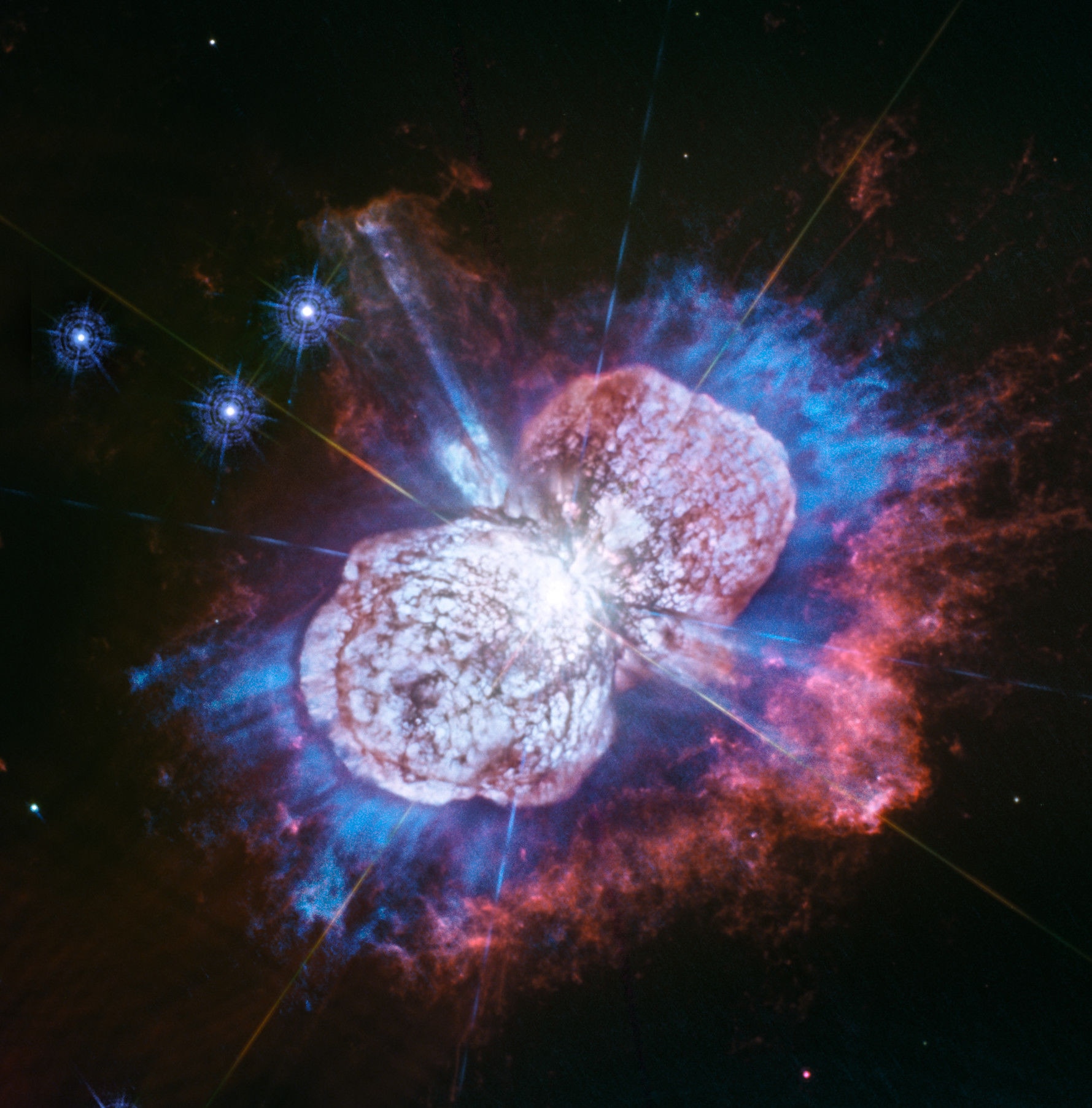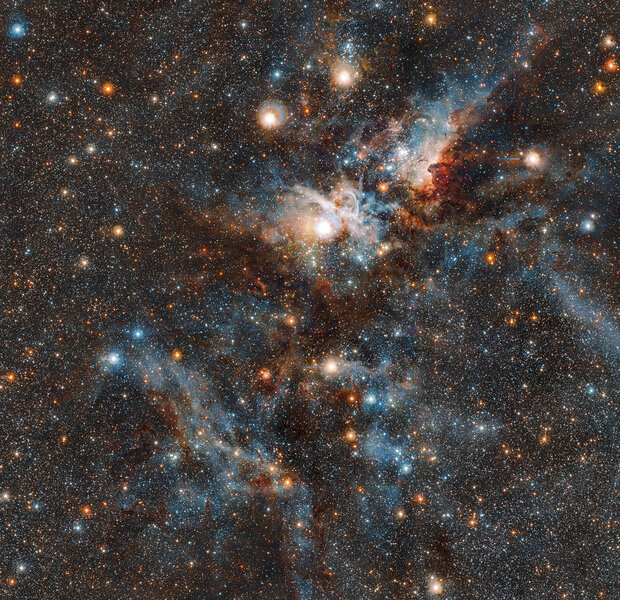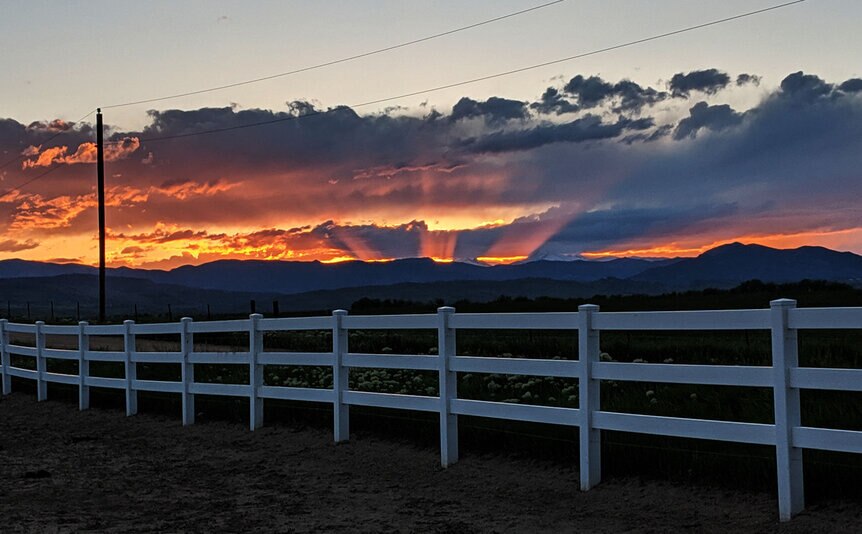Create a free profile to get unlimited access to exclusive videos, sweepstakes, and more!
The Universe does fireworks way better. Meet Eta Carinae.

Eta Carinae may be the most terrifying star in the galaxy.
Let me paint a picture for you. Eta Car is actually two stars, both of which we call type O stars, meaning they are far more massive, hot, and luminous than the Sun. The bigger of the two, called Eta Carinae A, is a monster, probably a hundred or more times the mass of the Sun. It’s one of the most luminous stars in the galaxy, blasting out something like 5 million times the energy of the Sun.
Five. Million.
If the other star, Et Car B, were off by itself it would be considered a beast as well, with roughly 50 times the mass of the Sun and glowing with the light of a hundred thousand Suns. Yet next to Eta Car A it’s actually difficult to see at all.
A star is a balance between gravity trying to pull it together into the core and the heat causing it to expand. Eta Car A is so massive that nuclear fusion in its core runs at a furious rate, and the energy it generates is so huge that it can barely hold itself together; a small increase in luminosity would tear the star apart. In 1843, light from a colossal eruption from the star reached Earth. It increased in brightness by a factor of 10 — 50 million times the Sun’s output — becoming the second-brightest star in the sky despite being 7,500 light-years away. Two enormous bubbles of matter were blown out of the star, each with about the mass of the Sun. The energy of this event was just short of a supernova.
Eta Car has been an object of intense scrutiny for decades. One observatory that has been used many times to watch it is Hubble Space Telescope. Just in time for the Fourth of July, this Hubble image of Eta Car has been released:
Holy cosmic pyrotechnics!
Eta Car the star is in the middle of all that mess, nearly obscured by the gas around it (if you have trouble seeing it, the eight sharply defined lines you can see point right to it; those are diffraction spikes caused by light entering Hubble and bending around the metal vanes holding a mirror in place; see the footnote on this article). The two huge lobes of gas from the Great Eruption are obvious; we see them at an angle so one is on the side of the star toward us and the other on other far side.
There’s a thick disk of material around the star, and you can see a hint of it between the two lobes. The two stars making up Eta Car orbit each other every five years, which is really fast. This tends to throw material out in the plane of the orbits, creating that disk. When Eta Car A erupted, the material had a harder time plowing through that disk, so instead blew up and down away from it, in the polar directions.
The red material surrounding the bubbles is nitrogen gas blown out in the eruption as well, slamming into material either previously ejected from the star or just the material floating around space near the star (Eta Car is in the ridiculously huge Carina Nebula, which is thick with gas and dust). The shock waves generated as the material plows into the slower gas excites it and causes it to glow.
What’s so very interesting about this new image is the blue material. Astronomers took images in the ultraviolet to look for magnesium (which glows in the UV) ejected by the eruption, and they expected it to be mixed with the nitrogen. Instead, they found it (shown in blue in the image) between the star and the shocked outer gas. They expected that region to be empty, but here it is, loaded with very hot gas. It’s unclear what that gas is doing there, but it hadn’t been seen before. This means that huge eruption was even more energetic, because it had to throw out all this rapidly moving gas as well. It looks like Eta Car really was just on this side of going supernova back in the 1840s.
It’s hard to overstate how complicated this all is. When I worked on Hubble we had a recurring program to observe Eta Car every few months, and I did some work with Ted Gull, the astronomer running that program, to process the spectra. They were a nightmare; there is so much energy in the gas that every atom glows in a phenomenal array of wavelengths. Worse, the different gas velocities smear out and shift the wavelengths of the light, making it hard to know what elements we were even looking at. One day Ted printed out a couple of dozen of the spectra on paper and taped them together into one really long spectrum on the wall outside the office. I used to see him standing there looking at it, chuckling to himself at the mad complexity he had chosen to untangle. I could barely make heads or tails out of it.
One other thing: All around the star you can see broader rays of light streaming out. That’s light from Eta Car pouring past material in the bubbles; the clots of gas and dust block light, but the gaps between the clumps let light through, which illuminates the gas beyond.
In other words: They’re crepuscular rays, just like you sometimes see on cloudy days, especially near sunset. Incredible.
Eventually — probably in less than a million years, maybe less — Eta Car will truly explode, becoming a supernova. When it does it’ll easily outshine Venus in southern hemisphere skies, and will probably even be bright enough to cast shadows. From 75 quadrillion kilometers away.
How’s that for a Fourth of July fireworks display?





























